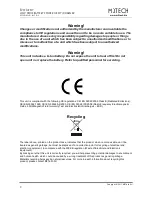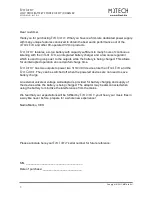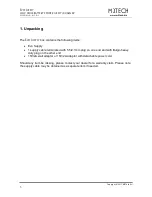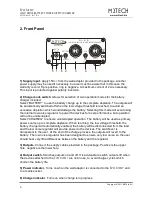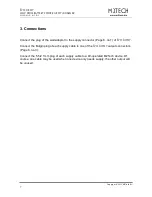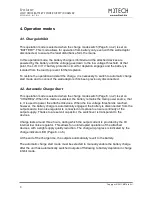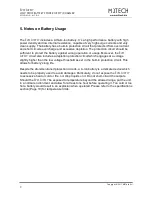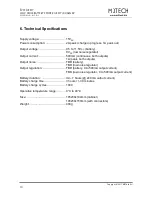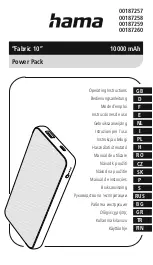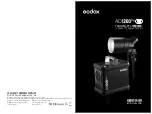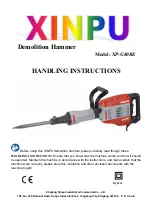
E
vo
S
UPPLY
LOW NOISE BATTERY POWER SUPPLY/CHARGER
REVISION P
r
B – JULY 2011
Copyright © 2011, M2Tech Srl
8
M2Tech
www.m2tech.biz
4. Operation modes
4.1. Charge Inhibit
This operation mode is selected when the charge mode switch (Page 6, no.2) is set on
“BATTERY”. This mode allows for operation from battery only, even with the wall adaptor
disconnected, to ensure the least disturbance form the mains.
In this operation mode, the battery charge is inhibited and the attached devices are
powered by the battery until the voltage goes down to the low voltage threshold. At that
point, the
E
vo
S
UPPLY
battery protection circuit for depletion engages and the battery is
isolated from the load to prevent further depletion.
To restore the operation and start the charge, it is necessary to switch to automatic charge
start mode and to connect the wall adaptors if it’s been previously disconnected.
4.2. Automatic Charge Start
This operation mode is selected when the charge mode switch (Page 6, no.2) is set on
“CHG/REG”. When this mode is selected, the battery remains the main power source, that
is, it is used to power the attached devices. When the low voltage threshold is reached,
however, the battery charge is automatically engaged, the battery is disconnected from the
outputs and a low noise regulator is connected in its place to ensure continuity of the
output supply. Thanks to a reservoir capacitor, the switchover is transparent to the
devices.
Charge lasts around three hours, during which the output current is provided by the 9V
internal low noise regulator. This allows for uninterrupted operation of the attached
devices, with a slight supply quality reduction. The charge-in-progress is indicated by the
charge indicator LED (Page 6, no.6).
At the end of the charge time, the outputs automatically revert to the battery.
The automatic charge start mode must be selected to manually enable the battery charge
after the unit has automatically switched outputs off following to battery depletion in charge
inhibit mode.


